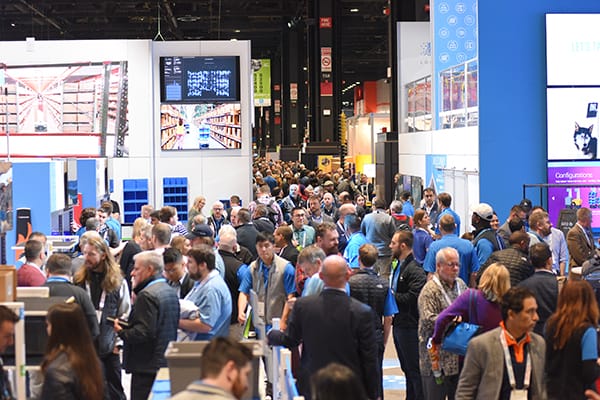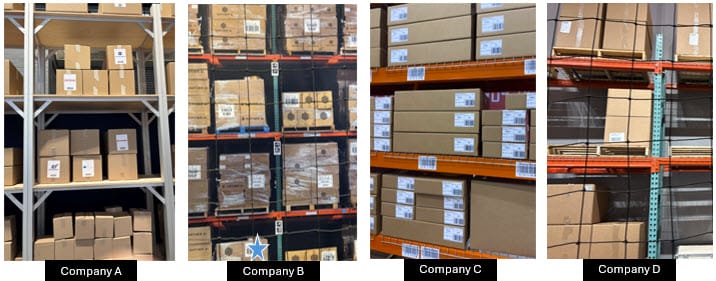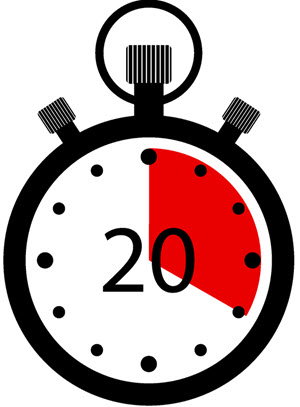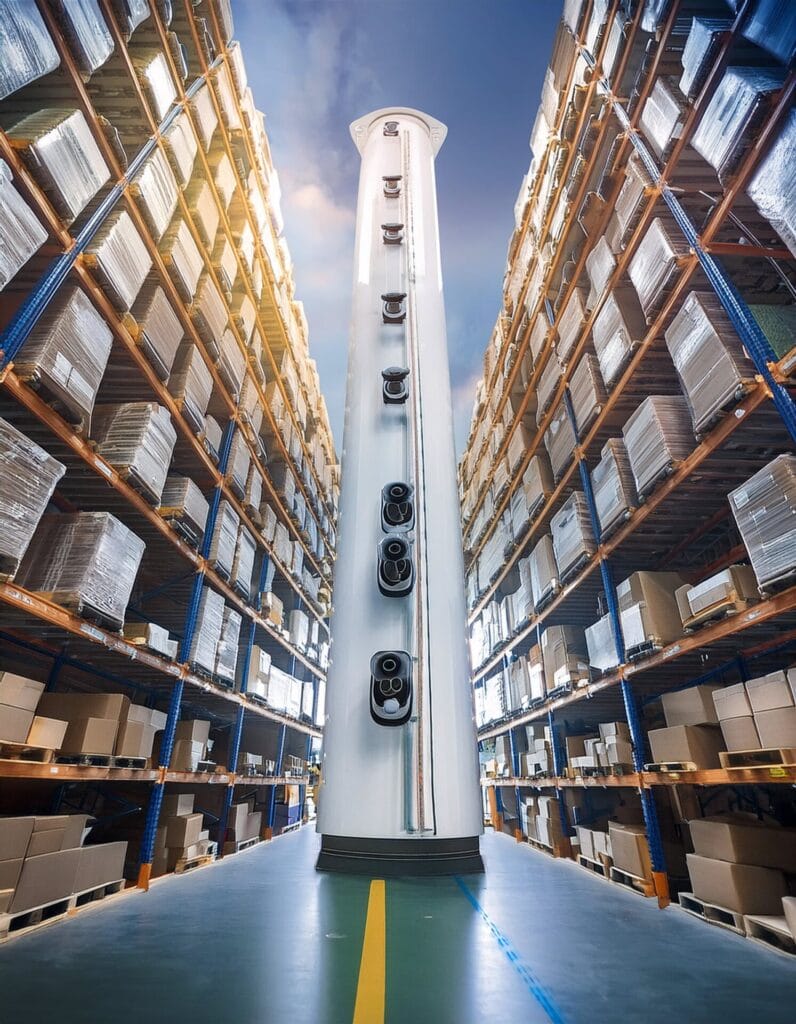Your browser is out of date, for the best web viewing experience visit Browse Happy to upgrade your browser today.

Inventory managers today are faced with a wide array of options for automated cycle counting—some might say, too many. Many of these solutions were showcased at ProMat in Chicago. Vimaan demonstrated our StorTRACK system, highlighting its ability to scan a variety of stored inventory items. In another hall, the company boasting the world’s tallest robot put on its own display, as did several of the leading warehouse drone vendors, drawing crowds behind safety netting to watch their airborne scanners in action.

Each exhibitor re-created warehouse-like environments to showcase their technology in action—but did you notice the key difference among these staged cycle counting demonstrations? A few booths drew attention—not for what they showed, but for what they left out. Here are examples of how 4 of these companies configured their simulated warehouse racks to demonstrate their cycle counting expertise:

When exhibiting at a show like Promat, the goal is to demonstrate and emphasize the solution’s greatest strengths. In this case each company had configured racks in a way to highlight each of their system’s capabilities. For example all 4 of these booths demonstrated how their systems can scan inventory in high bays. If you look closely at these photos, you might be able identify the limitations in 3 of these specific solutions.
Company “A” showcased its towering AMR in a booth featuring a basic warehouse setup—a few boxes with oversized standalone labels. Some boxes were placed on shelves, but the labels were spaced generously apart to make scanning easier. Meanwhile, companies’ “B” and “D,” both drone-based cycle counting providers, displayed setups also with significant spacing between boxes and labels, just like the AMR demo.
Company “C” (if you haven’t guessed by now) was Vimaan. Our mock warehouse setup featured more than 60 items with corresponding labels—demonstrating StorTRACK’s ability to handle dense, realistic inventory environments. Whether scanning one item or fifty, StorTRACK performs with the same speed and precision.
To highlight the contrast in capabilities, we’ve replaced the original photos below with stars that represent the position and density of labels within this section of the warehouse display. These indicators underscores the significant differences in scanning performance across solutions.

Clearly 3 out of the 4 booths did not have enough confidence they could read labels in dense environments. The inventory configurations at each booth were designed to highlight the strengths of their respective cycle counting technologies—but they also revealed critical weaknesses, for example:



Warehouse drones perform well when scanning:
• Large labels placed on individual pallets
• Labels that are widely spaced apart from one another, more specifically they function best when scanning individual pallet labels.
While these strengths are notable, they also underscore some of the core technological challenges drones face:
While the cycle counting AMR does offer a wider field of view, capturing a bay across its entire height would require an inordinate number of cameras, which explodes the cost of the solution. Consequently, its capability is limited, covering a large area with fewer cameras, thus scanning only a small number of items with oversized barcodes and minimal data. This suggests hesitation in showcasing the system’s performance in more realistic, high-density scenarios.

So how does Vimaan successfully scan significantly more labels, even when they’re smaller and positioned just centimeters apart? The answer lies in our advanced design and technology:
Events like ProMat and MODEX give customers the opportunity to compare solutions side by side. And when performance is placed on display, the differences become clear.
To the keen eye, the limitations of other solutions were hard to ignore. Despite their impressive form factors and showmanship, the lack of dense case scanning in their booth demonstrations spoke volumes. Whether it was drones avoiding closely packed items or AMRs scanning only a handful of oversized labels, it was clear these systems are not built for the complexity of real-world case-level inventory tracking.
In contrast, Vimaan’s StorTRACK proved its ability to accurately and efficiently scan tightly packed cases with smaller labels—just as it does every day in live warehouse environments. The gap in capability wasn’t just noticeable—it was undeniable.